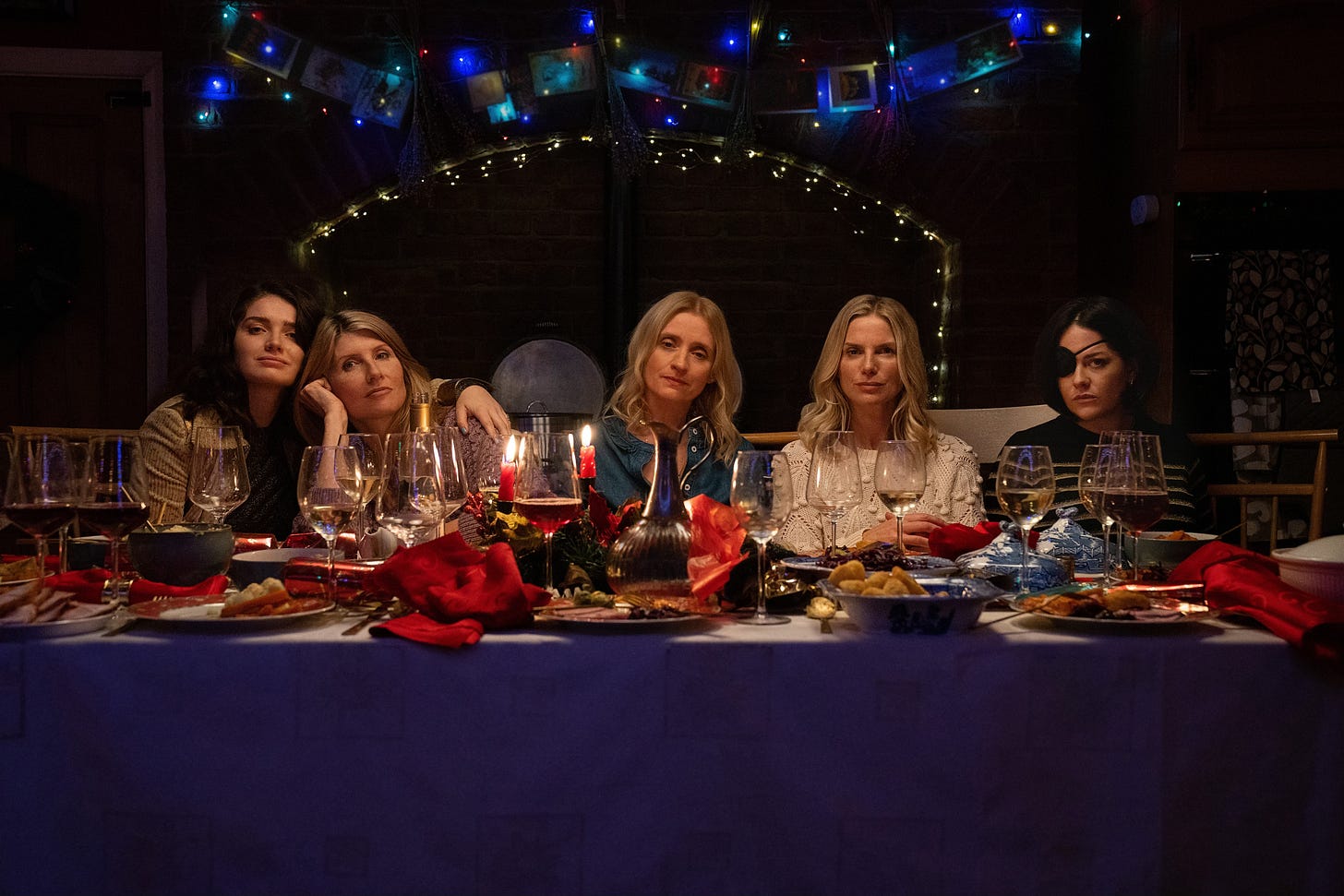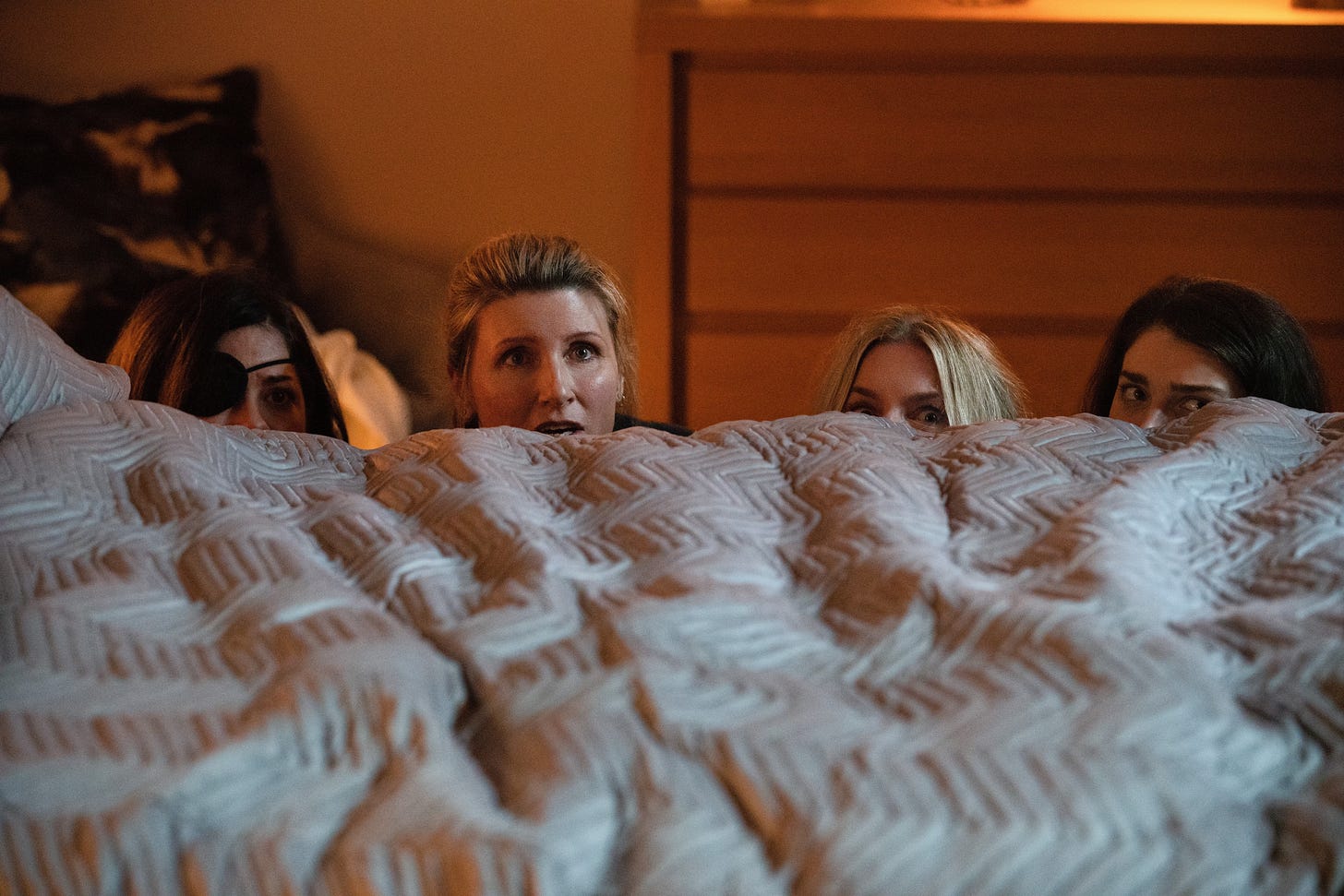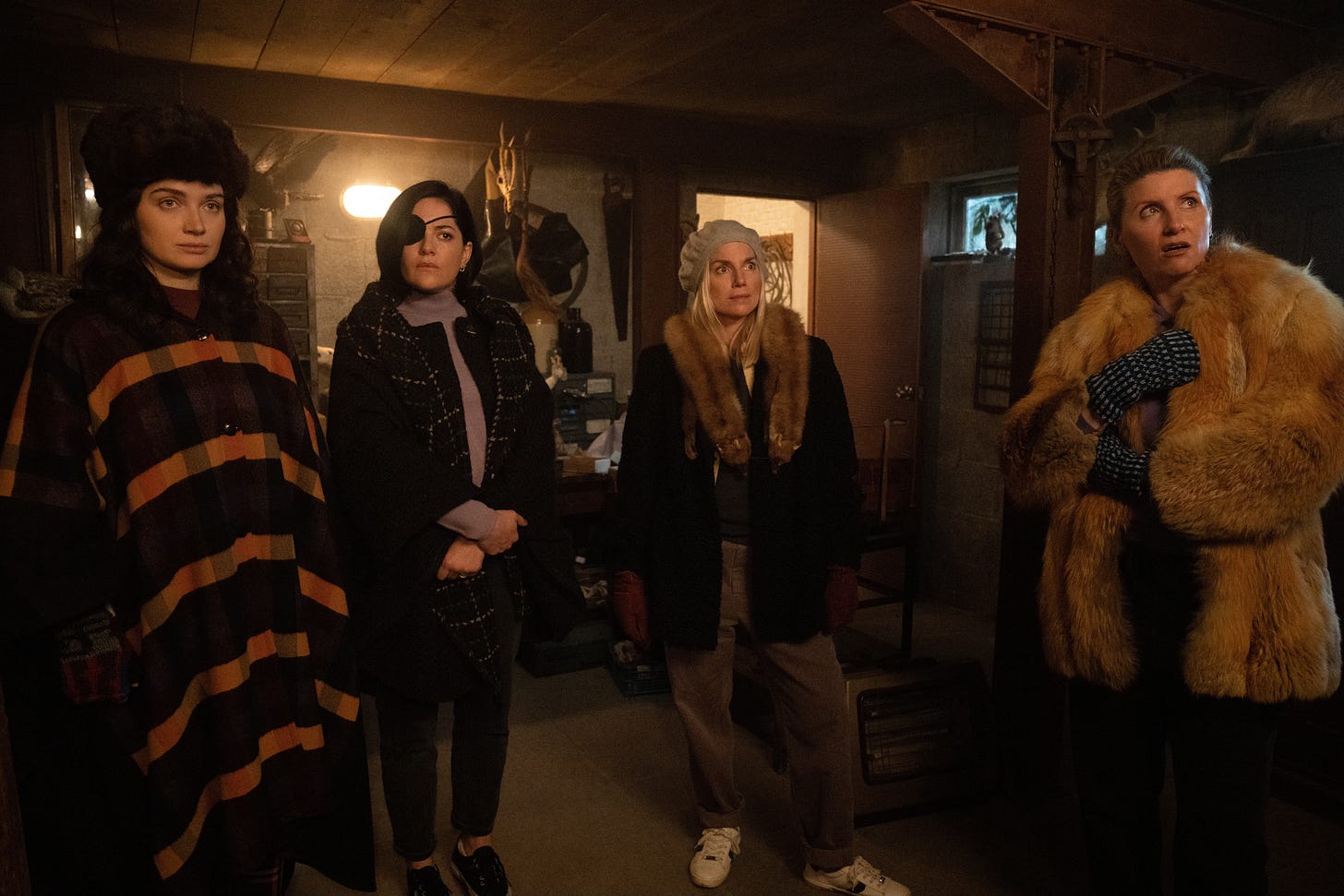Story Analysis: Bad Sisters
10 Lessons the Series Teaches About Writing -- and a primer for Season Two
Sharon Horgan is an Irish writer and creator who consistently develops compelling and relatable characters, explores universal themes in authentic settings and manages to blend genres in new and exciting ways. Upon reviewing her credits, you might notice she’s also a great creative collaborator on many of her series, sharing credit on a number of her pilot scripts, which cover numerous formats and tones. Her most recent series, Bad Sisters, on AppleTV+, is an incredibly binge-able comedy thriller that just came back for its second season and is overflowing with entertaining examples of rich storytelling.
Based off the successful 2012 Belgian limited series, Clan, Horgan redeveloped the show, setting it in Dublin, Ireland. Further changes from the original include a stream-lined murder plot and additional character development around the five main characters, who are sisters.
Now, if you haven’t seen the show already, stop what you’re doing right now and watch the pilot (though you’ll devour the whole season). Rewatching is recommended if it’s been a while — consider this a fun homework assignment! In addition, I find watching trailers a great way to get an overview of a series. So here is the trailer for Season One.
Lastly, here is the pilot script, which has its differences from the final, produced episode, but is still loaded with useful details.
Now, let’s review these 10 key writing lessons — consider how you can apply them to your own work.
1. How to Create Memorable Core Characters
The show features the Garvey sisters, who have a genuine camaraderie, but very different personalities, motivations, and flaws. They are: Eva (the oldest and so, the matriarch), Grace (sweet and naive), Ursula (a nurse mom who seems sensible, except for the affair she’s been having), Bibi (angry and mysteriously wearing an eye-patch) and Becka (the youngest and so, the baby). We meet them all, individually and quite memorably, in the teaser. It’s a masterclass in how to establish a character from the first moment we meet them (go ahead, rewatch the opening again).
Lesson: No two characters in a story should ever be alike. Give each distinct traits that create unique points of view (putting them in conflict when needed) and emotional arcs that make them relatable.
2. How to Navigate Dual Timelines
The narrative of season one alternates between the present (an insurance investigation surrounding the death of the sisters’ brother-in-law) and the past (which reveals each sister having a potential reason to be a suspect in his death), over a six month period.
In this series, there is a unique, visual technique used to show where in time the flashbacks fall, as we ZOOM OUT of a scene in present day, to what appears to be a reel of family home movies, seen through a viewfinder. As we slide to the left, we move back in time, past various other memories on the reel, then ZOOM IN on a particular moment in the past that somehow informs the present.
Note in the pilot how the first flashback happens at the top of act two and spans all of act two (timecode reveals this happening at almost exactly the 1/4 mark and ends on the 1/2 mark, or midpoint of the episode). The specificity of that timing is not a coincidence — everything is intentional, and beautifully crafted.
Lesson: Dual timelines can heighten suspense and allow for creative storytelling, revealing backstory gradually, as needed.
3. Balance Tone Skillfully
Bad Sisters blends dark humor with serious themes like abuse and familial loyalty. In one of the opening scenes of the pilot, we are drawn into the drama and gravity of meeting a distraught woman, Grace, tearfully making sandwiches alone in her kitchen. Moments later, she utters the words, “I’m sorry” and it is revealed she is speaking to her deceased husband, who is lying in an open casket in the dining room. At once, her tears come to an abrupt halt when she notices he has an erection. Right away, the audience realizes this show is gonna be a blend of so many genres — comedy, thriller, mystery and drama.
Lesson: Mixing tones requires careful balance; humor can offset darker material without undermining its impact.
4. Craft a Strong Antagonist
John Paul (the abusive brother-in-law) is a deeply compelling villain, hated by all, but somehow humanized in his motivations. He does not like the fact that his wife has such a bond with her sisters and is determined to come between them at any cost. Throughout, John Paul manages to make cruel comments to each of the sisters but treats no one worse than Grace, who he intimidates, manipulates and gaslights at every turn.
Lesson: The importance of a well-developed antagonist should never be underestimated, as it can drive the plot and amplify the stakes.
5. Explore Moral Complexity
Very simply, the sisters’ murder plot raises questions about justice, morality, and loyalty. While they each have their individual take on the situation, they are united in their drive to protect Grace, whose spirit has been slowly chipped away at by her despicable husband. As the sisters witness John Paul turn his attention to controlling his teenage daughter, it becomes more and more clear they can’t just stand by any longer.
Lesson: Real life is never black and white. Gray areas in morality make for more nuanced and engaging storytelling. Consider each of your characters’ moral compass to help you determine plot.
6. Lean on Family Dynamics
The relationship between the sisters drives the narrative, shining a light on their loyalty, inner conflicts, and love for each other. But interestingly, the insurance investigators, Thomas and Matthew Claflin, are half-brothers. While they mostly function in the story to create obstacles for the Garvey sisters, they are also a reminder that the show is about adult siblings and the bond of family relationships, which come into play in their own season arc.
Lesson: Authentic family dynamics add emotional depth and universality to your story.

7. Use Setting as a Character
The Irish coast is vivid and atmospheric, reflecting the tension and drama of the show. A location like the Forty Foot, in Sandycove, Dublin Bay, where people have been swimming in the ice cold Irish Sea water for 250 years, is a perfect spot for the sisters’ to reconnect with each other, share memories of their mother and feel resilience to face their challenges. There is also a small town vibe felt in every episode, as everyone seems to know everyone’s business, which adds to their paranoia at times.
Lesson: Worldbuilding is critical in every genre, as the setting can enhance tone and mood, becoming an integral part of the story.
8. Leverage a Mystery Structure
Simply put, the dramatic question of "Will they succeed?" or "Will they be caught?" is posed in the pilot and sustains tension throughout the season.
Lesson: A central mystery or goal keeps audiences engaged and invested in the outcome.
9. Show Empathy in Writing About Trauma
The series sensitively portrays the effects of abuse and its ripple effects on the family. This is something Sharon Horgan took very seriously in the development process. You can hear more on her thoughts on the topic on the Apple Podcast - "She Writes Women Who Feel Real." Listen here.
Lesson: When dealing with heavy themes, treat them with care and authenticity to avoid trivialization.
10. Deliver a Satisfying Resolution
Bad Sisters ties up its threads in a way that feels earned and emotionally impactful. Think about ways to surprise your audience and make your ending satisfying. If you have any luck with it, you may find your limited series gets picked up for a second season.
Lesson: Endings should resolve key conflicts while staying true to the characters’ journeys.
Now, are you ready to dive into season two of Bad Sisters??













